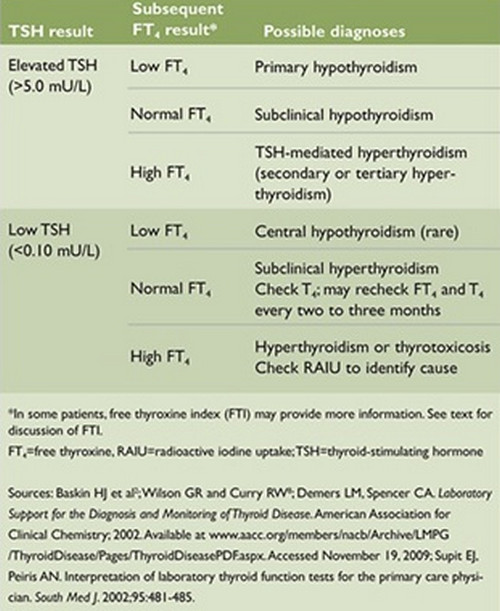TSH Hypothyroidism Levels Range: Understanding Low and High TSH Implications
What do abnormal TSH levels indicate about thyroid function. How does TSH relate to T3 and T4 hormones. What are the symptoms of high and low TSH levels. What is the normal TSH range for diagnosing thyroid disorders.
The Role of TSH in Thyroid Function and Homeostasis
Thyroid stimulating hormone (TSH) plays a crucial role in maintaining the body’s homeostasis. Produced by the pituitary gland, TSH acts as a messenger, instructing the thyroid gland to produce more or fewer hormones, specifically triiodothyronine (T3) and thyroxine (T4). These hormones are responsible for regulating various bodily functions, including metabolic rate, body temperature, and brain development.
The endocrine system operates on a negative feedback loop. When the thyroid gland produces hormones, they circulate back to the hypothalamus and pituitary gland, signaling that an adequate amount of hormone is being produced. This feedback system helps maintain balance in the body.

How does TSH maintain homeostasis?
- TSH stimulates the thyroid gland to produce T3 and T4
- T3 and T4 levels are monitored by the hypothalamus and pituitary gland
- The pituitary adjusts TSH production based on T3 and T4 levels
- This feedback loop helps maintain optimal hormone levels
Understanding TSH Levels and Their Significance
TSH levels are commonly used by healthcare providers to assess thyroid function and guide treatment strategies. However, it’s essential to consider TSH results in conjunction with free T4 and total T3 levels for a more comprehensive understanding of thyroid health.
Interpreting TSH levels can be complex, as what’s considered normal for one person may not be for another. Factors such as age, medications, and overall health can influence TSH levels. Therefore, healthcare providers must consider the full clinical picture, including symptoms and other test results, when making a diagnosis.
Why are TSH levels important in thyroid diagnosis?
- They indicate the thyroid’s ability to produce hormones
- Abnormal levels can suggest various thyroid disorders
- TSH tests are often the first step in thyroid function assessment
- Changes in TSH levels can precede noticeable symptoms
Normal TSH Levels: Defining the Range
Determining the normal range for TSH levels has been a subject of ongoing debate in the medical community. Generally, the goal range for TSH is typically between 0.5 and 4.5 or 5 mIU/L. However, it’s crucial to note that these ranges can vary slightly depending on the laboratory and the specific population being tested.

What are the key TSH level ranges?
- Normal range: 0.5 – 4.5 mIU/L
- Subclinical hypothyroidism: 4.5 – 10 mIU/L
- Overt hypothyroidism: > 10 mIU/L
It’s important to remember that TSH levels alone don’t tell the whole story. Symptoms, T3 and T4 levels, and other factors must be considered for an accurate diagnosis.
High TSH Levels: Causes and Implications
Elevated TSH levels typically indicate one of two conditions: primary hypothyroidism or pituitary adenoma. In primary hypothyroidism, the thyroid gland is underactive and not producing enough thyroid hormones. As a result, the pituitary gland increases TSH production in an attempt to stimulate the thyroid to produce more hormones.
What are common symptoms of high TSH levels?
- Sudden weight gain
- Fatigue and low energy
- Irregular menstrual periods
- Sleep disturbances
- Cold intolerance
- Dry skin and hair
- Constipation
While these symptoms can indicate high TSH levels, it’s crucial to note that they can also be caused by other conditions. A comprehensive medical evaluation is necessary for an accurate diagnosis.
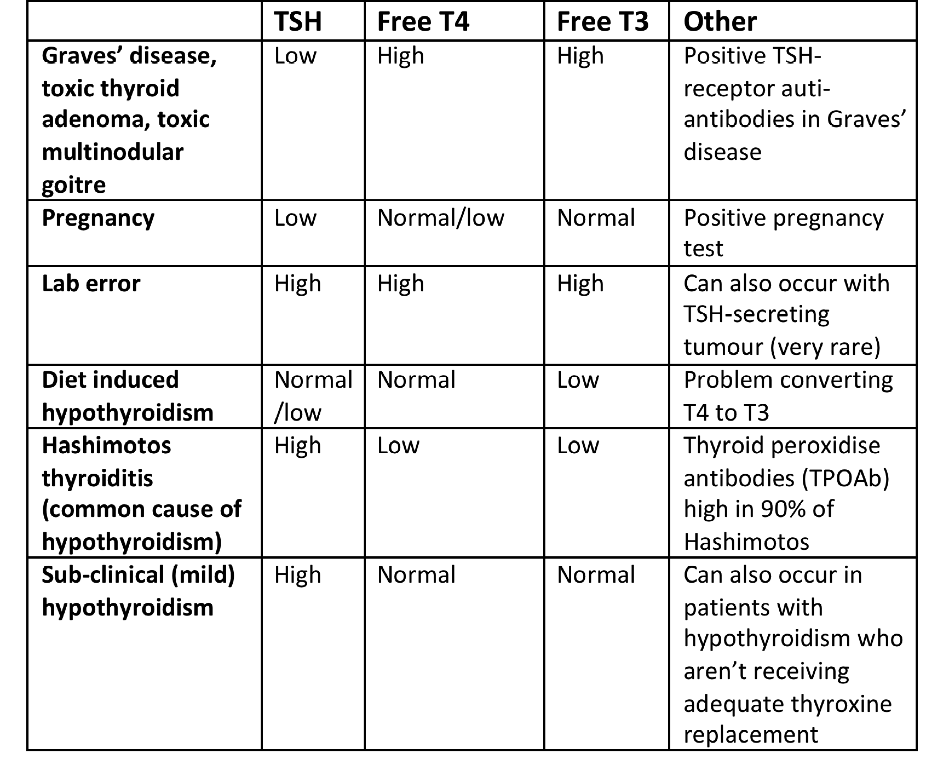
Low TSH Levels: Understanding Hyperthyroidism
Low TSH levels often indicate an overactive thyroid gland, a condition known as hyperthyroidism. In this case, the thyroid is producing excessive amounts of T3 and T4, leading to a decrease in TSH production by the pituitary gland.
What are the common causes of low TSH levels?
- Graves’ disease (an autoimmune disorder)
- Toxic multinodular goiter
- Thyroiditis (inflammation of the thyroid gland)
- Excessive iodine intake
- Certain medications (e.g., high doses of thyroid hormone replacement)
Low TSH levels can also occur in individuals with central hypothyroidism, a rare condition where the pituitary gland itself is not functioning properly.
What symptoms might indicate low TSH levels?
- Unexplained weight loss
- Increased appetite
- Rapid heartbeat or palpitations
- Anxiety and irritability
- Heat intolerance and excessive sweating
- Tremors in hands and fingers
- Changes in menstrual patterns
The Importance of Comprehensive Thyroid Testing
While TSH levels are a valuable indicator of thyroid function, they should not be the sole basis for diagnosis. A comprehensive thyroid panel, including free T4 and total T3 levels, provides a more complete picture of thyroid health. This approach allows healthcare providers to make more accurate diagnoses and develop appropriate treatment plans.
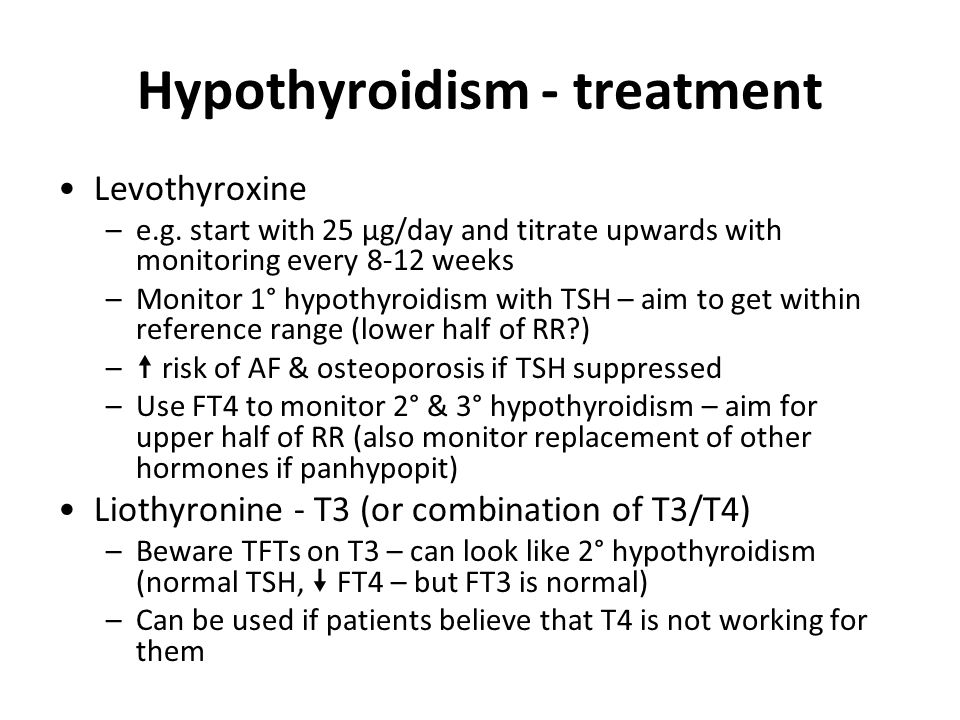
Why is a comprehensive thyroid panel important?
- It provides a more complete picture of thyroid function
- Helps identify subclinical thyroid disorders
- Allows for more precise treatment adjustments
- Can reveal secondary thyroid disorders
In addition to blood tests, healthcare providers should consider the patient’s medical history, symptoms, and any medications or supplements they may be taking. In some cases, additional tests such as thyroid ultrasound may be necessary to reach a definitive diagnosis.
Factors Affecting TSH Levels
Several factors can influence TSH levels, making interpretation of test results more complex. Understanding these factors is crucial for healthcare providers and patients alike.
What factors can affect TSH levels?
- Age: TSH levels tend to increase with age
- Pregnancy: TSH levels fluctuate during pregnancy
- Time of day: TSH levels are typically highest in the early morning
- Certain medications: Some drugs can alter TSH production or thyroid function
- Stress: Physical or emotional stress can temporarily affect TSH levels
- Illness: Non-thyroidal illnesses can impact TSH production
- Diet: Extreme iodine intake (excess or deficiency) can affect thyroid function
Given these variables, it’s essential to interpret TSH results in the context of the individual patient’s circumstances and to repeat tests when necessary to confirm findings.
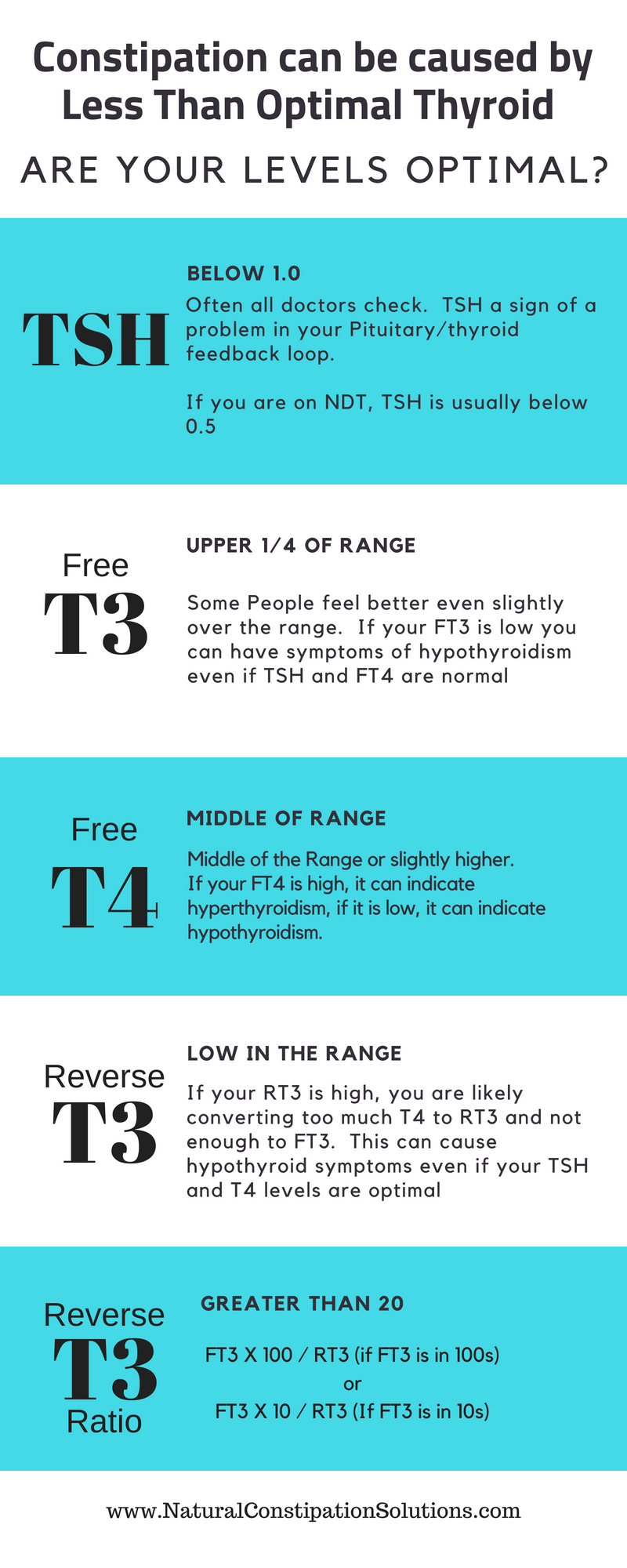
Treatment Approaches for Thyroid Disorders
Treatment for thyroid disorders depends on the specific condition and its severity. The goal is to restore normal thyroid function and alleviate symptoms.
How are different thyroid disorders treated?
- Hypothyroidism: Typically treated with thyroid hormone replacement therapy
- Hyperthyroidism: May be treated with anti-thyroid medications, radioactive iodine, or surgery
- Subclinical thyroid disorders: Treatment decisions are made on a case-by-case basis
Treatment plans should be tailored to the individual patient, taking into account factors such as age, overall health, and the presence of other medical conditions. Regular monitoring of TSH and thyroid hormone levels is essential to ensure optimal treatment outcomes.
What are the goals of thyroid disorder treatment?
- Normalize thyroid hormone levels
- Alleviate symptoms
- Prevent long-term complications
- Improve overall quality of life
- Maintain stable TSH levels within the target range
It’s important to note that finding the right treatment balance may take time and require adjustments. Patients should work closely with their healthcare providers to achieve optimal results.
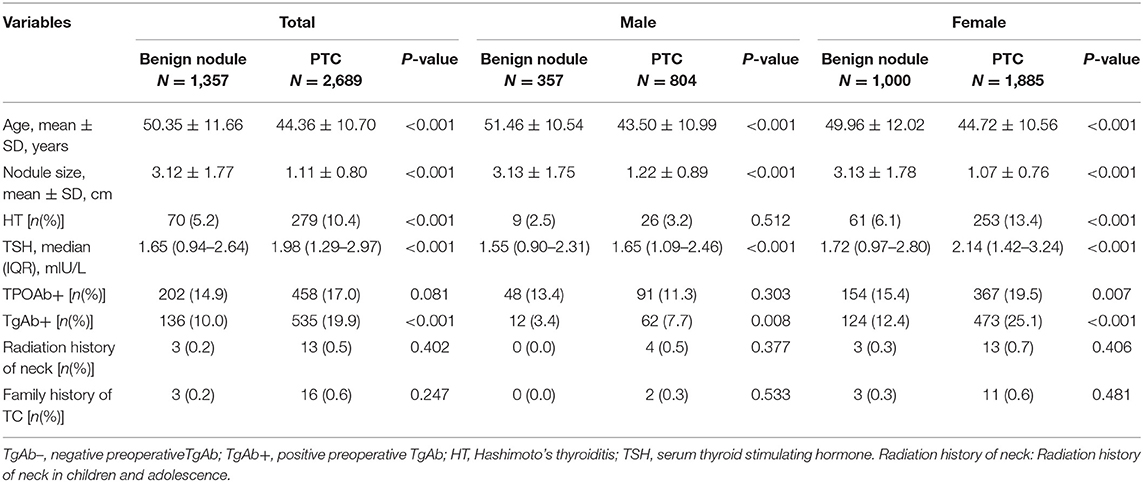
Living with Thyroid Disorders: Lifestyle Considerations
While medical treatment is essential for managing thyroid disorders, lifestyle factors can also play a significant role in overall thyroid health and symptom management.
What lifestyle changes can support thyroid health?
- Balanced diet: Ensure adequate intake of iodine, selenium, and zinc
- Regular exercise: Helps maintain healthy weight and improves energy levels
- Stress management: Practice relaxation techniques to reduce stress-related hormonal imbalances
- Consistent sleep schedule: Adequate sleep supports overall hormonal balance
- Limit goitrogen intake: Some foods can interfere with thyroid function when consumed in large amounts
It’s important to discuss any significant lifestyle changes with a healthcare provider, as they may impact thyroid function and medication needs.
How can patients effectively manage their thyroid condition?
- Take medications as prescribed
- Attend regular follow-up appointments
- Monitor symptoms and report changes to healthcare providers
- Maintain a healthy lifestyle
- Learn about their condition to make informed decisions
- Consider joining support groups for additional resources and community
By combining proper medical care with lifestyle adjustments, many individuals with thyroid disorders can effectively manage their condition and maintain a good quality of life.

The Future of Thyroid Disorder Diagnosis and Treatment
As research in endocrinology progresses, new approaches to diagnosing and treating thyroid disorders are emerging. These advancements promise to improve the accuracy of diagnoses and the effectiveness of treatments.
What are some emerging trends in thyroid care?
- Personalized medicine: Tailoring treatment based on genetic and molecular profiles
- Advanced imaging techniques: Improving the detection of thyroid abnormalities
- Novel biomarkers: Identifying new indicators of thyroid function and autoimmunity
- Targeted therapies: Developing treatments that address specific mechanisms of thyroid dysfunction
- Artificial intelligence: Using machine learning to improve diagnosis and treatment planning
These advancements hold the potential to revolutionize thyroid care, offering more precise and effective treatments for individuals with thyroid disorders.
How might future developments impact thyroid disorder management?
- More accurate and earlier diagnoses
- Improved ability to predict treatment responses
- Reduced side effects from treatments
- Better management of difficult-to-treat cases
- Enhanced understanding of the relationship between thyroid function and other health conditions
As these new approaches are developed and refined, they will likely lead to significant improvements in the care and quality of life for individuals with thyroid disorders.

What Low TSH or High TSH Levels Could Mean
Think of your thyroid gland as a clearinghouse in which information runs in and out, to make sure your entire body achieves the balance of homeostasis.
Thyroid stimulating hormone (TSH) is produced by your brain’s pituitary gland and sent to your thyroid, to make sure that a state of equilibrium known as homeostasis occurs.
TSH tells your thyroid to produce more or fewer hormones, specifically triiodothyronine (T3) and thyroxine (T4), to make sure you’re operating optimally. These two hormones regulate many important aspects of your body, including metabolic rate, body temperature, and brain development.
Because the right amounts of T3 and T4 are responsible for helping maintain a smoothly functioning body in so many ways, understanding high, low, and normal levels of TSH is vital.
What Is Homeostasis?
Homeostasis and the endocrine system are based on a negative feedback system. When any end organ produces a hormone, these hormones then make their way back to the hypothalamus and the pituitary gland, so that the brain and pituitary gland know there’s an adequate amount of hormone being made.
If one of these organs is damaged, such as in autoimmune thyroid disease, and the thyroid gland is no longer making an adequate amount of thyroid hormone, this lower level is then detected by the hypothalamus in the brain. Therefore, a large amount of TSH is released in an attempt to produce more thyroid hormone from the thyroid gland.
What to Know About TSH Levels
Most commonly, providers use TSH levels to guide therapy to ensure that a person is producing the right levels of thyroid hormone. It’s important to look not only at TSH test results, but also free T4 and total T3, which could provide more accurate numbers and present a more comprehensive picture of what’s going on and for your doctor to figure out the right treatment plan.
In addition to blood tests, it’s important that your doctor knows the full picture of your presenting symptoms and when they occur, plus any medications or supplements you may be taking. To get to the bottom of what your issue may be, it’s possible that your doctor may order further tests, including a thyroid ultrasound.
Since TSH is responsible for the creation of hormones T3 and T4, which help regulate so much of your body, and because there are so many factors at play in creation or suppression of these hormones, using TSH data serves as the beginning of any thorough diagnosis and treatment plan. It can be confusing, especially considering what’s really a normal range for one person is not for another, and that levels will shift for many reasons.
For example, Joseph Winchell, M.D., family medicine physician at Mount Carmel Medical Group in Pickerington, OH, references a situation in which suppressed TSH is shown via testing. The physician’s initial reaction would be to reduce therapy. However, after checking free T4 or total T3, the full picture shows levels in the normal range.
What are Normal TSH Levels?
It’s an ongoing debate. Ultimately, the standard of care is to treat into the goal range for TSH, which is typically between 0.5 and 4.5 or 5.
A TSH level of 10 mIU/L or higher is typically indicative of hypothyroidism. A TSH level of 4.5 to 10 mIU/L is considered indicative of subclinical hypothyroidism.
A TSH level of 4.5 to 10 mIU/L is considered indicative of subclinical hypothyroidism.
If you visit your doctor complaining of thyroid issues, worried by symptoms such as fatigue and the inability to lose weight, it’s important to remember that, while thyroid function plays a role in both your energy levels and your ability to gain or lose weight, there are a lot of other factors that need to be considered.
Being tired all the time does not necessarily mean you have a thyroid condition, just as being cold does not automatically mean you have hypothyroidism. An inability to lose weight or gaining excessive weight does not mean your thyroid is abnormal. So while it’s appropriate to check in these situations, patients should realize there are a lot of other factors that could be going on, and a wider differential needs to be looked at when you’re having these concerns.
What Could High TSH Levels Mean?
Suffering from high TSH typically means one of two things, according to Dr. Winchell.
Winchell.
Hypothyroidism
The most common is an underactive thyroid gland, or hypothyroidism. If your thyroid is not producing enough thyroid stimulating hormone, your pituitary gland is going to release more TSH to try to get more T3 and T4 from the thyroid gland.
It’s a little tricky to wrap your head around, but having high TSH levels indicates low levels of T3 and T4.
High TSH Levels Symptoms
When a patient reports symptoms that include sudden weight gain, fatigue, low energy, irregular periods, or problems with sleep, it’s possible that this is because of high TSH. Because symptoms of having high TSH are also common symptoms for other conditions, the only way to know is to have a doctor provide a blood test to check your TSH levels.
Looking at cumulative symptoms over time is also valuable for helping reach a diagnosis.
Euthyroid Sick Syndrome
Another common diagnosis of high TSH comes from nonthyroidal illnesses, otherwise known as euthyroid sick syndrome.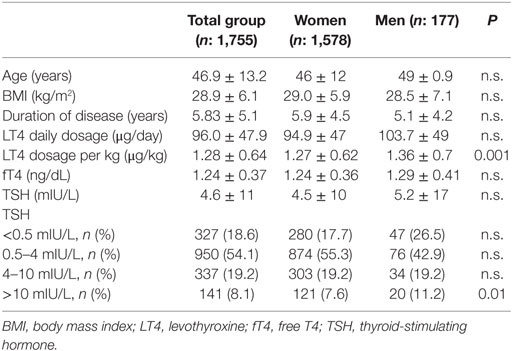 In this instance sick people, frequently those hospitalized in the ICU, are producing less T3 or T4 because of the illness that they’re suffering from.
In this instance sick people, frequently those hospitalized in the ICU, are producing less T3 or T4 because of the illness that they’re suffering from.
What Could Low TSH Levels Mean?
Unlike high TSH, in which only a few conditions present themselves for relatively straightforward diagnoses, there are many reasons for low TSH. Low TSH means higher levels of T3 and T4 produced by the thyroid gland.
Graves’ Disease
The most common diagnosis is Graves’ disease, which triggers hyperthyroidism. Put simply, that means an overactive thyroid. In this autoimmune disorder, the thyroid becomes overactive because it is attacked by the body’s immune system.
Central Hypothyroidism
Another example is a syndrome called central hypothyroidism. In this case, your TSH may be low, but you’re considered to have hypothyroidism because of damage to the pituitary gland. In this example, the gland is not making enough TSH to adequately stimulate the thyroid gland to produce T3 and T4. It’s a bit of a challenge to diagnose, and there’s more work-up to figure it out.
It’s a bit of a challenge to diagnose, and there’s more work-up to figure it out.
Overmedication
Exogenous thyroid use could also lead to a diagnosis of low TSH. This can happen from either taking too much thyroid hormone replacement medication or from abusing thyroid hormone medication, which could lead to suppressed TSH.
Notes: This article was originally published February 1, 2022 and most recently updated July 19, 2022.
Our Review Process
Low to high ranges, symptoms, and what they mean
The thyroid-stimulating hormone (TSH) test measures the amount of TSH in the blood. TSH levels convey how well a person’s thyroid is functioning.
Doctors can use TSH test results to diagnose thyroid disorders, such as hypothyroidism and hyperthyroidism.
The pituitary gland produces TSH, which is a hormone that stimulates the thyroid gland.
The thyroid is a butterfly-shaped gland in the throat. It produces hormones that help regulate many bodily functions, such as metabolism, heart rate, and body temperature.
This article describes the TSH test and results. We also discuss what high and low TSH levels indicate and available treatments.
Share on PinterestMNT-infographic_guide infographic by Diego Sabogal 1401179-TSH-levels-original
The normal range depends on a person’s age and whether they are pregnant.
The ranges tend to increase as a person gets older. Research has not shown a consistent difference in TSH levels between males and females.
However, according to the American Thyroid Association, doctors generally consider levels are within a normal range between 0.4–4.0 milliunits per liter (mU/l).
The following table provides estimates of TSH levels that are normal, low (indicating hyperthyroidism), and high (indicating hypothyroidism):
| Hyperthyroidism | Normal | Mild hypothyroidism | Hypothyroidism |
| 0–0.4 | 0.4–4 | 4–10 | 10 |
Many labs use these reference values.
However, there is some debate about these ranges. The author of a 2016 review suggests that normal levels are more likely to fall between 0.5–2.5 milli-international units (mIU) per milliliter.
Females are more likely to experience thyroid dysfunction than males. The Office on Women’s Health reports that 1 in 8 females experience thyroid problems at some point. This includes hyperthyroidism and hypothyroidism. The risk of thyroid problems increases during pregnancy and around menopause.
Research does not show a consistent difference in TSH levels between males and females. However, some evidence suggests that TSH levels are generally higher in females. For example, studies in 2020 investigating Chinese and French populations suggest that TSH levels are higher in females, but other factors, such as age, are more likely to affect TSH levels.
In some people, thyroid conditions are linked with sexual dysfunction. This may affect more males than females. According to a 2019 study, 59–63% of males with hypothyroidism also experience sexual dysfunction, compared with 22–46% of females who have hypothyroidism.
Blood TSH levels tend to increase as people get older, with evidence noting that hypothyroidism is the most common thyroid condition in people over 60 and steadily increases with age.
Research involving older adults suggests that roughly 7–14% of people may have TSH levels above the upper limit of reference ranges.
Pregnancy hormones naturally increase the levels of certain thyroid hormones in the blood. This is essential for the development of the fetal brain and nervous system.
At the same time, the levels of TSH in the blood decrease. As a result, doctors use lower reference ranges during pregnancy. The lower TSH range is decreased by around 0.4 mU/l, and the upper limit reduced by approximately 0.5 mU/l.
Levels of TSH in the blood increase gradually during the second and third trimesters, but they remain lower than normal levels in women who are not pregnant.
Doctors carefully monitor TSH levels throughout pregnancy. Having unusually high or low levels can affect the risk of miscarriage and cause pregnancy-related complications, such as:
- preeclampsia
- premature birth
- low birth weight
- congestive heart failure
TSH levels are highest at birth and gradually decrease as a child gets older. As such, TSH levels can vary among children. After the newborn phase, health experts may define mild hypothyroidism in children as TSH levels ranging between 4.5–10 mU/l.
As such, TSH levels can vary among children. After the newborn phase, health experts may define mild hypothyroidism in children as TSH levels ranging between 4.5–10 mU/l.
The following table shows TSH levels for children by age, according to an older study using data from 512 healthy children:
| Age | Reference ranges (mU/l) |
| Day of birth | 3.84–11.75 |
| 1 month | 1.18–3.57 |
| 1 year | 1.17–3.55 |
| 5 years | 1.15–3.47 |
| 12 years | 1.09–3.31 |
| 18 years | 1.05–3.16 |
High TSH levels indicate hypothyroidism. People develop hypothyroidism when their thyroid produces low levels of hormones.
When someone’s thyroid gland does not produce enough hormones, the pituitary gland produces more TSH to compensate.
Symptoms of hypothyroidism may include:
- fatigue
- weight gain
- swelling of the face and neck
- increased sensitivity to cold temperatures
- dry skin
- thinning hair
- a slow heart rate
- irregular or heavy menstrual periods
- fertility problems
- depression
- constipation
Low TSH levels indicate hyperthyroidism. This is also known as an overactive thyroid.
This is also known as an overactive thyroid.
If a person’s thyroid gland is secreting levels of hormones that are too high, the pituitary gland produces less TSH.
Symptoms of hyperthyroidism can include:
- irregular or rapid heartbeat
- muscle weakness
- nervousness or irritability
- difficulty sleeping
- frequent bowel movements or diarrhea
- weight loss
- mood changes
The TSH test involves a healthcare professional drawing blood from a vein in the inner arm. They then send the blood sample for laboratory testing.
Usually, people do not need to prepare for a TSH test. However, if the doctor is checking the blood for more than one issue, a person may need to fast or prepare in another way. The doctor will provide this information beforehand.
A TSH test is often the best way to monitor thyroid function. However, if a person has abnormally high or low TSH levels, the doctor may need to perform at least one other diagnostic test to identify the underlying cause. These tests look at levels of specific thyroid hormones and antibodies.
These tests look at levels of specific thyroid hormones and antibodies.
In addition to age, sex, and pregnancy, many other factors can also affect TSH levels. Evidence suggests that genetic, environmental, or intrinsic factors can alter TSH levels. Some of these factors may include:
- other conditions occurring at the same time
- medications
- supplements
- ethnicity
- diet and iodine status
- time of day and time of year
- autoantibodies and heterophilic antibodies
- smoking
- pollutants
Doctors can treat hypothyroidism with medications, such as levothyroxine, that replace the missing thyroid hormones.
A person should take this medication once a day or as prescribed. The doctor will monitor how well the treatment is working by running additional blood tests every few months.
According to the Food and Drug Administration (FDA), people should take levothyroxine once a day: in the morning and on an empty stomach, at least half an hour before eating.
The FDA also recommends that a person informs their doctor if they eat soybean flour, walnuts, dietary fiber, or cottonseed meal — these foods can affect how the body processes levothyroxine. Drinking grapefruit juice may also delay the absorption of levothyroxine.
Hyperthyroidism treatments focus on reducing thyroid hormone levels to prevent long-term health complications.
A person may need to take beta-blockers and antithyroid medications.
Another effective treatment is radioiodine therapy. This involves taking a capsule or liquid that contains radioactive iodine-131, which destroys cells that produce thyroid hormones. However, people who take radioiodine therapy may develop hypothyroidism in the future.
Surgical removal of the thyroid gland can treat severe hyperthyroidism. Doctors often reserve this for individuals who cannot take first-line medications and severe cases of hyperthyroidism.
A TSH test measures the amount of the hormone in the blood. Doctors can use the results to diagnose thyroid conditions, such as hypothyroidism and hyperthyroidism.
Doctors can use the results to diagnose thyroid conditions, such as hypothyroidism and hyperthyroidism.
Normal TSH ranges can vary widely, depending on a person’s age, sex, and weight. Reference TSH ranges remain controversial, but for most people, the normal range falls between 0.4 and 4.0 mU/l.
Having an overactive or underactive thyroid can cause health issues that interfere with a person’s daily life. During pregnancy, unusually high or low TSH levels can lead to complications.
A doctor can provide more information about the TSH test and interpreting the results.
Standards for the level of thysotropic hormone in the blood: the current state of the problem | Samsonova
One of the most controversial issues in modern thyroidology is the issue of TSH blood levels [4, 10]. The interest in this problem is understandable, since it is well known that the determination of the concentration of TSH in the blood is today considered a reference test in the laboratory assessment of the functional state of the thyroid gland, which allows timely detection of any violation of its function, including at the stage of asymptomatic hyper- and hypothyroxinemia. Thus, an increase in the content of TSH in the blood is the earliest laboratory sign of not only obvious, but also threatened thyroid pathology, especially thyroid insufficiency. In this regard, it is quite obvious that the verification of thyroid insufficiency largely depends on the standard upper limit of the TSH level in the blood. Currently, it is generally accepted that the concentration of TSH in the blood more than 4-5 mU / l indicates a decrease in thyroid function.
Thus, an increase in the content of TSH in the blood is the earliest laboratory sign of not only obvious, but also threatened thyroid pathology, especially thyroid insufficiency. In this regard, it is quite obvious that the verification of thyroid insufficiency largely depends on the standard upper limit of the TSH level in the blood. Currently, it is generally accepted that the concentration of TSH in the blood more than 4-5 mU / l indicates a decrease in thyroid function.
This article is a continuation of the discussion on the standards of the upper limit of normal for the level of TSH in the blood, open on the pages of both foreign and domestic journals.
The reason for the discussion was the latest recommendations of the US National Academy of Clinical Biochemistry to reduce the upper limit of normal for the level of TSH in the blood from 4 to 2.5 mU/l [8]. The basis for making such decisions was the results of the epidemiological study NHANES-111, which showed that during the examination of 13,344 people receiving adequate iodine prophylaxis, the level of TSH in the blood above 2. 5 mU/l was determined in no more than 5% of cases [11]. At the same time, the study did not include those population groups that could potentially have deviations in the functional state of the thyroid gland [11]. Similar results were obtained in the European study SHIP-1 [18]. Thus, as a result of a survey of 1488 adults in Pomerania, no more than 5% had a TSH level in the blood above 2.12 mU/l [18].
5 mU/l was determined in no more than 5% of cases [11]. At the same time, the study did not include those population groups that could potentially have deviations in the functional state of the thyroid gland [11]. Similar results were obtained in the European study SHIP-1 [18]. Thus, as a result of a survey of 1488 adults in Pomerania, no more than 5% had a TSH level in the blood above 2.12 mU/l [18].
It should be noted that not only after the publication of the recommendations of the US National Academy of Clinical Biochemistry, but long before that, articles began to appear in foreign literature, indicating that adult patients with a TSH blood level of 2–4 mU/l differ in a number of clinical signs and laboratory tests from a population with a blood TSH level of less than 2 mU/l. So, back in 1992, J. Staub et al. showed that a group of adults with an average TSH content in the blood of 3.0 ± 0.3 mU/l demonstrates a hyperergic TSH response to thyroliberin stimulation, which, as is known, indicates a decrease in the functional reserve of the thyroid gland [16].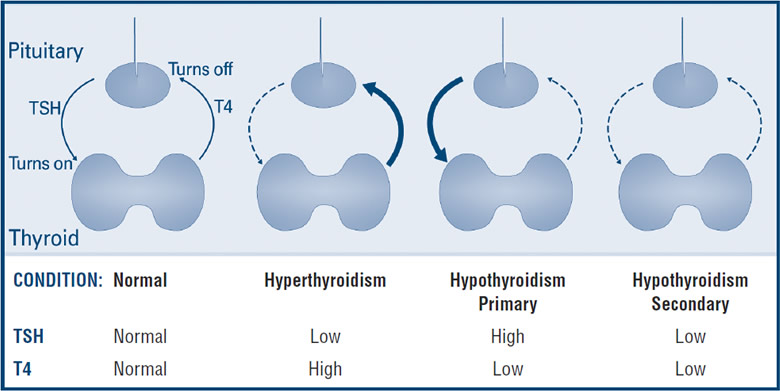 According to the data of the Wickham study, in the group of people with a TSH level in the blood above 2 mU/l, overt hypothyroidism is more often diagnosed in the future [17]. Finally, in adults, this level of TSH is associated with an increased risk of hypercholesterolemia [7, 9, 14], endothelial dysfunction [12], and miscarriage [15]. According to our data, such a concentration of TSH in the blood of women of reproductive age is associated with hypoestrogenemia. Thus, every 8th (12.5%) woman of reproductive age, in whom, when assessing the functional state of the thyroid gland, the level of TSH in the blood was determined from 2 to 4 mU/l, had a reduced level of estrogen in the blood (the median of estradiol in this group of women was 167 pmol/l), while in all women with a TSH level in the blood below 2 mU/l, the content of estradiol was within the normal range (median of estradiol 235, 25 pmol/l, /> = 0.01) [5].
According to the data of the Wickham study, in the group of people with a TSH level in the blood above 2 mU/l, overt hypothyroidism is more often diagnosed in the future [17]. Finally, in adults, this level of TSH is associated with an increased risk of hypercholesterolemia [7, 9, 14], endothelial dysfunction [12], and miscarriage [15]. According to our data, such a concentration of TSH in the blood of women of reproductive age is associated with hypoestrogenemia. Thus, every 8th (12.5%) woman of reproductive age, in whom, when assessing the functional state of the thyroid gland, the level of TSH in the blood was determined from 2 to 4 mU/l, had a reduced level of estrogen in the blood (the median of estradiol in this group of women was 167 pmol/l), while in all women with a TSH level in the blood below 2 mU/l, the content of estradiol was within the normal range (median of estradiol 235, 25 pmol/l, /> = 0.01) [5].
Moreover, in pregnant women (the most vulnerable part of the population in terms of the formation of pathological conditions associated with hypothyroxinemia), the level of TSH in the first trimester of gestation of more than 2 mU/l is currently recognized as an increased risk factor for the development of gestational hypothyroxinemia.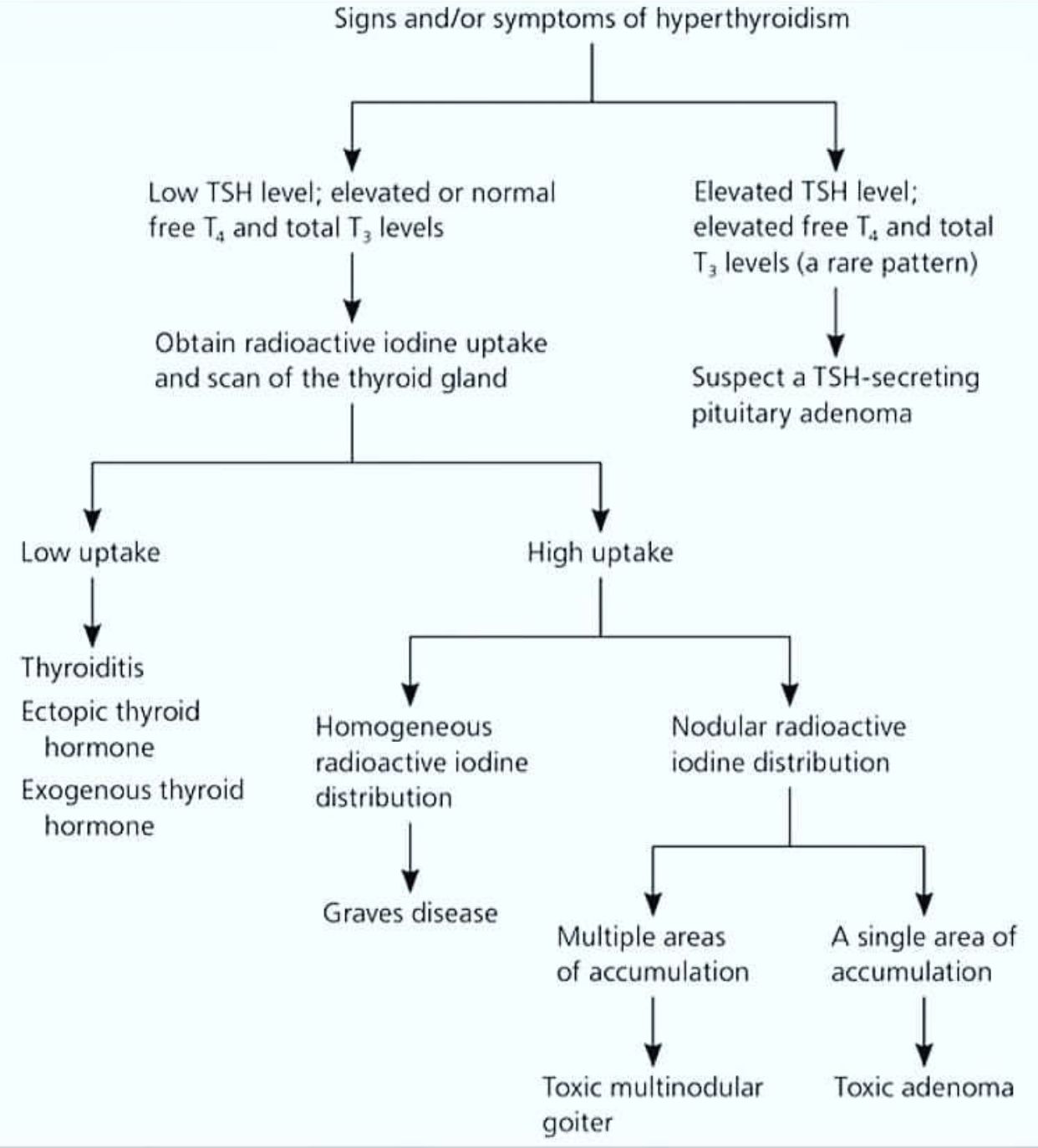 So, according to our data, gestational hypothyroxinemia occurs in almost every 2nd pregnant woman with diffuse endemic goiter, who has a TSH level of 2 to 4 mU/l in the first trimester of gestation (/> = 0.05) [2].
So, according to our data, gestational hypothyroxinemia occurs in almost every 2nd pregnant woman with diffuse endemic goiter, who has a TSH level of 2 to 4 mU/l in the first trimester of gestation (/> = 0.05) [2].
Thus, a similar blood TSH level in adults is associated with a known spectrum of pathological conditions, which today are a recognized consequence of chronic hypothyroxinemia.
At the same time, it should be emphasized that all the accumulated knowledge and understanding of the clinical and prognostic significance of the concentration of TSH in the blood more than 2, but less than 4 mU/l was obtained on the basis of a survey of the adult population. The following data allow us to form an opinion on the significance, legitimacy and expediency of isolating this particular range of TSH levels in the blood and in pediatric practice. Thus, according to the results of a study by D.E. Shilin (2002), children and adolescents (n = 114) with a basal TSH level in the blood above 2 mU/l (average 2. 57 ± 0.06 mU/l) differ from children and adolescents (n = 475) with a basal TSH level below 2 mU/l (average 1.19± 0.02 mU/l) [6].
57 ± 0.06 mU/l) differ from children and adolescents (n = 475) with a basal TSH level below 2 mU/l (average 1.19± 0.02 mU/l) [6].
In 94.1% of children (p < 0.05) of this group, a hyperergic TSH response to thyroliberin stimulation is observed, which indicates a reduced functional reserve of the thyroid gland [6]. According to the same author, such children and adolescents have significantly (/> = 0.03) higher concentrations of atherogenic lipid fractions, and adolescent girls with a similar level of TSH in the blood show signs of age-related immaturity of the uterus and gonads (p = 0.01) [6]. In addition, such girls are prone to polymenorrhea (menstruation lasts an average of 5.5 ± 0.3 days versus 4.7 ± 0.1 days in the group of girls with TSH levels in the blood below 2 mU/l; p = 0.01) and a lower level of estradiol in the blood (mean estradiol content 162 ± 23 pmol/l versus 239 ± 22 pmol/l in the group of girls with a TSH concentration in the blood of less than 2 mU/l; p = 0. 05) [6].
05) [6].
According to our data, it is adolescent girls with TSH levels in the blood above 2 but below 4 mU/l that are most vulnerable in terms of the formation of functional disorders of the reproductive system. So, according to the results of our research, every 2nd (54%) girl with a similar level of TSH in the blood has menstrual dysfunction of the type of opsomenorrhea (while only 28% of girls with a TSH level below 2 mU/l, Р = 0.032) [1].
So, in our opinion, today there are enough arguments in favor of the fact that the level of TSH in the blood from 2 to 4 mU/l in children also reflects the earliest in terms of onset and the mildest in severity thyroid insufficiency.
Obviously, thyroid insufficiency in iodine-deficient regions has its own evolution. In our opinion, the evolution of thyroid insufficiency can be represented as follows: 1) a normal level of free thyroxin and a TSH level of 2 to 4 mU/l, there are no clinical signs of hypothyroidism; 2) normal level of free thyroxine and TSH level above 4-5 mU/l, there are no clinical symptoms of hypothyroidism; 3) a reduced level of free thyroxine and a TSH level above 4-5 mU/l in combination with clinical signs of hypothyroidism. The last two stages of thyroid insufficiency are well known and are classified as subclinical and overt hypothyroidism, respectively.
The last two stages of thyroid insufficiency are well known and are classified as subclinical and overt hypothyroidism, respectively.
At the same time, today there is no single generally accepted term that characterizes the level of TSH from 2 to 4 mU/l. This is understandable, since terminology issues are always the most difficult. In the English literature, the TSH level in the traditionally normal range, but above 2 mU/L, is denoted by the following terms: “high-normal TSH” [14], “very mild thyroid failure” [15], “a lessened thyroid reserve” [15], “mildest form of subclinical hypothyroidism” [16]. We propose to use the term “minimal thyroid insufficiency” to designate the condition, which is reflected in the level of TSH from 2 to 4 mU/l. In our opinion, it is he who most accurately characterizes the earliest in terms of onset and the mildest in severity thyroid insufficiency.
At the same time, at a given level of TSH, the functionality of the thyroid gland should be assessed depending on its size. So, in persons without goiter, a slight increase in the level of TSH (2-4 mU / l) only indicates that, with normal sizes, the thyroid gland is not able to provide adequate production of thyroid hormones. In this group of people, a similar level of TSH reflects the readiness to turn on compensatory mechanisms leading to an increase in the size of the thyroid gland and to the normalization of the level of thyroid hormones. Thus, in persons with normal thyroid gland sizes, this condition cannot yet be classified as a pathology, but should be considered as a borderline condition.
So, in persons without goiter, a slight increase in the level of TSH (2-4 mU / l) only indicates that, with normal sizes, the thyroid gland is not able to provide adequate production of thyroid hormones. In this group of people, a similar level of TSH reflects the readiness to turn on compensatory mechanisms leading to an increase in the size of the thyroid gland and to the normalization of the level of thyroid hormones. Thus, in persons with normal thyroid gland sizes, this condition cannot yet be classified as a pathology, but should be considered as a borderline condition.
In patients with long-term goiter, this level of TSH indicates that the increase in the size of the thyroid gland did not lead to the elimination of hypothyroxinemia and, therefore, the required level of thyroid hormones was not achieved. Most likely, in this case, there was a decrease in the compensatory and functional reserves of the thyroid gland due to a mild genetic defect in morpho- or hormonogenesis.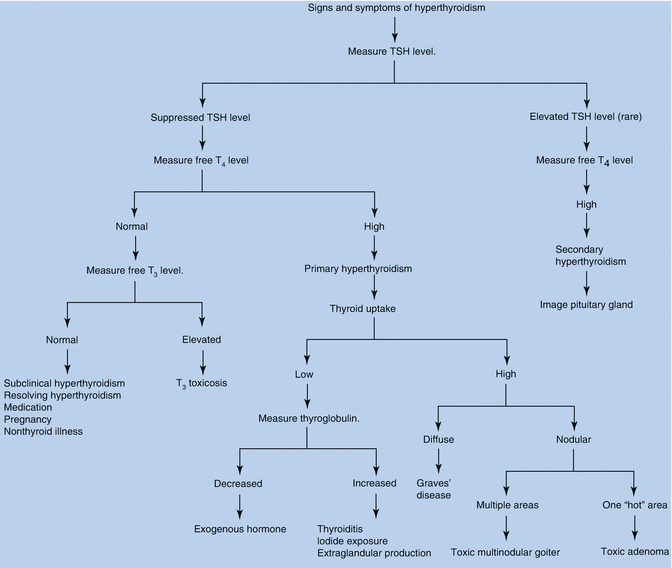 Even with mild congenital insufficiency of the thyroid gland in conditions of insufficient iodine intake, the formation of goiter will not lead to the normalization of thyroid status, i.e., to the elimination of hypothyroxinemia and, consequently, the risk of iodine deficiency diseases.
Even with mild congenital insufficiency of the thyroid gland in conditions of insufficient iodine intake, the formation of goiter will not lead to the normalization of thyroid status, i.e., to the elimination of hypothyroxinemia and, consequently, the risk of iodine deficiency diseases.
We are deeply convinced that the use of the term “minimal thyroid insufficiency” in the context in which it is presented in the article will not only not mislead readers, but, on the contrary, will help to understand the essence of the problem and present the evolution of thyroid insufficiency in iodine-deficient regions.
It should be noted that another, no less, and perhaps more important issue of this discussion is whether people with a TSH blood level of 2 to 4 mU / l need therapy. Foreign and domestic authors consider the danger of expanding indications for verification of hypothyroidism and treatment of such a patient with levothyroxine preparations as a serious argument against the recognition of new standards for THG in the blood [4, 10].
In our opinion, the TSH level in the range from 2 to 4 mU/l only indicates that in the region of iodine deficiency the thyroid gland is able to maintain an ideal euthyroid state only if there is an adequate supply of iodine. It is quite obvious that in the absence of adequate iodine prophylaxis in regions with even moderate and / or mild iodine deficiency (i.e., in most of the territory of Russia), it is this degree of thyroid insufficiency that will continue to occur frequently and determine the formation of medically and socially significant iodine deficiency states. Hence the conclusion that the vast majority of people living in these conditions and having a similar level of TSH in the blood need only adequate iodine prophylaxis. Adequate iodine prophylaxis in most of them is able to maintain an ideal euthyroid state for many years of life.
The exception is 2 groups of people. First of all, these are pregnant women with a TSH level in the first trimester of gestation above 2 mU/l, i.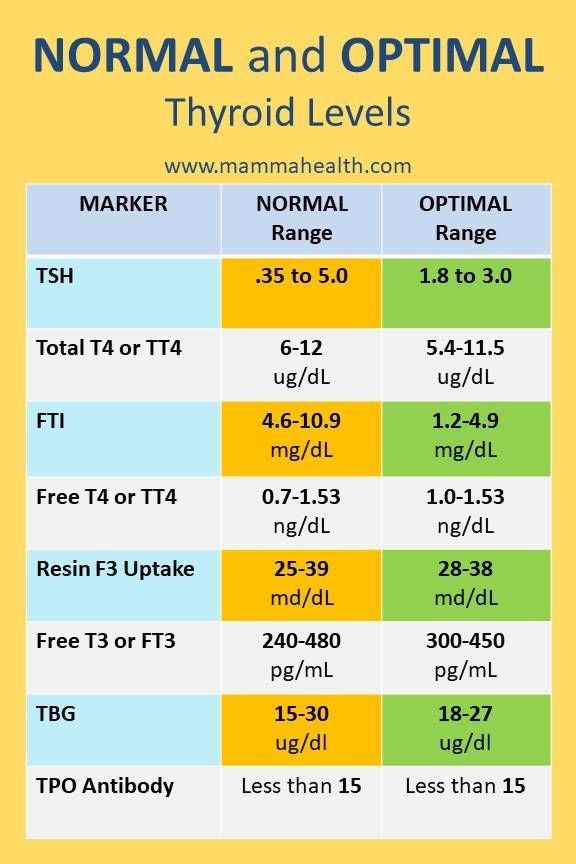 e., those with a risk factor for the development of gestational hypothyroxinemia [2]. Taking into account the exceptional role of the normal level of maternal thyroxine for the formation and maturation of the central nervous system of the unborn child and the need for rapid and effective correction of gestational hypothyroxinemia, today no one doubts and objects that pregnant women with a similar level of TSH need treatment with levothyroxine preparations. In addition, it is required to prescribe levothyroxine preparations to persons exposed to other (except for iodine deficiency) strimogenic environmental factors or having more pronounced genetically determined defects in morpho- or hormone genesis of the thyroid gland. It should be emphasized that these are extremely rare cases.
e., those with a risk factor for the development of gestational hypothyroxinemia [2]. Taking into account the exceptional role of the normal level of maternal thyroxine for the formation and maturation of the central nervous system of the unborn child and the need for rapid and effective correction of gestational hypothyroxinemia, today no one doubts and objects that pregnant women with a similar level of TSH need treatment with levothyroxine preparations. In addition, it is required to prescribe levothyroxine preparations to persons exposed to other (except for iodine deficiency) strimogenic environmental factors or having more pronounced genetically determined defects in morpho- or hormone genesis of the thyroid gland. It should be emphasized that these are extremely rare cases.
When deciding on the TSH level standards, the modern double standards used to assess the functional state of the thyroid gland in untreated individuals and in patients receiving levothyroxine replacement therapy are somewhat surprising [3, 13]. In this regard, another strong argument in favor of narrowing the normal range for the level of TSH in the blood is that the vast majority of researchers have recognized and do not raise objections to TSH levels ranging from 0.5 to 2 mU/l as reflecting the euthyroid state of the thyroid gland in patients receiving replacement therapy with levothyroxine drugs [3, 13].
In this regard, another strong argument in favor of narrowing the normal range for the level of TSH in the blood is that the vast majority of researchers have recognized and do not raise objections to TSH levels ranging from 0.5 to 2 mU/l as reflecting the euthyroid state of the thyroid gland in patients receiving replacement therapy with levothyroxine drugs [3, 13].
So, the above data convince us that today there are more than enough arguments in favor of recognizing the fact that (both in adults and in children) the TSH level from 2 to 4 mU/l reflects the earliest in terms of onset and the mildest in severity thyroid insufficiency, namely, minimal thyroid insufficiency.
Narrowing the normal range of TSH levels in the blood from 0.5 to 2-2.5 mU/l and the speedy implementation of these standards in healthcare practice is a necessary condition for optimizing the early diagnosis, prevention, treatment of hypothyroxinemia and, consequently, the elimination of iodine deficiency conditions in Russia.
1. Bukanova SV Thyroid status and functional state of the reproductive system in children and adolescents living in an industrial metropolis with moderate to mild iodine deficiency: Authors. dis…. cand. honey. Sciences. -M., 2004.
2. Ivakhnenko VN Tirsoid, neuropsychiatric and somatic status of children born to mothers with goiter: Abstract of the thesis. dis…. cand. honey. Sciences. Moscow, 2005.
3. E. P. Kasatkina, M. I. Martynova, V. A. Peterkova, et al., Klin. thyroidol. – 2003. – V. 1, No. 1. – S. 26-27.
4. V. V. Fadeev // Klin. thyroidol. – 2004. – V. 2, No. 3. – S. 5-9.
5. Chubarova D.Yu. Reproductive health of women in the region of mild goiter endemia: Abstract of the thesis. dis…. cand. honey. Sciences. – M., 2006.
6. Shilin D. E. //Laboratory. – 2002. – No. 3. – S. 22-26.
7. Bakker S. J. L., Ter Matten J. C, Popp-Sni/ders C. et al. // J. Clin. Endocrinol. Metab. – 2001. – Vol. 86. – P. 1206-1211.
8. Baloch Z, Carayon P., Conte-Devolx B. et al. // thyroid. – 2003. Vol. 13.-P. 3-126.
Baloch Z, Carayon P., Conte-Devolx B. et al. // thyroid. – 2003. Vol. 13.-P. 3-126.
9. Bindels A. J., Weslendorp R. C, Frolich M. et al. // J. Clin. Endocrinol. – 1999. – Vol. 50.-P. 217-220.
10. Brabant G., Beek-Peccoz P., Jarzab B. et al. // EUR. J. Endocrinol. – 2006. – Vol. 154. – P. 633-637.
11. Hollowell J. C, Siaehling N. W, Flanders W. D. et al. // J. Clin. Endocrinol. Metab. – 2002. – Vol. 87. – P. 489-499
12. Lekakis J, Paramlchael C, Alevizaki M. et al. // thyroid. – 1997. – Vol. 7. – P. 411-414.
13. McDermott M. T., Ridgway C // i. Clin. Endocrinol. Metab. -2001. – Vol. 86.-P. 585-590.
14. Michalopoulou C, Alevizaki M., Piperingos C. et al. // EUR. J. Endocrinol. – 199S. – Vol. 138. – P. 141-145.
15. Prummel M. F, Wienlnga W. M. // Eur. J. Endocrinol. – 2004. – Vol. 150. – P. 751-755.
16. Staub J. J., Althaus B. V., Engler H. et al. // Am. J. Med. – 1992. – Vol. 92, No. 6. – P. 632-642.
17. Vanderpump M. P., Tunbridge W. M. C, French J. M. et al. // J. Clin. Endocrinol. – 1995. – Vol. 43. – P. 55-68.
P., Tunbridge W. M. C, French J. M. et al. // J. Clin. Endocrinol. – 1995. – Vol. 43. – P. 55-68.
18. Volzke H., Ludemann J., Robinson D. M. et al. // thyroid. – 2003. – Vol. 13. – P. 803-810.
TSH: function, norms and deviations
Life processes in the human body are regulated by the nervous and endocrine systems. An important function in this is assigned to the hypothalamic-pituitary complex. It consists of parts of the brain that regulate the vegetative functions of the body. They produce a number of hormones that control the activity of the endocrine glands. In particular, TSH coordinates the work of the thyroid gland. It is produced by the anterior pituitary gland. In turn, thyroid hormones also perform a number of important functions. They support the metabolism of various substances, regulate the functioning of organs, systems and tissues. In children, they take part in the correct physical and mental development of the body.
The effect of TSH on the vital activity of the body
The main function of thyroid-stimulating hormone is the mutual regulation of the synthesis of the thyroid hormones T3 and T4. If T3 and T4 free is lowered, TSH stimulates their production, and they, on the contrary, are able to inhibit the synthesis of thyroid-stimulating hormone. This process is triggered in the event of an increase in the concentration of T3 and T4. Thus, the correct hormonal balance in the body of a healthy person is maintained.
If T3 and T4 free is lowered, TSH stimulates their production, and they, on the contrary, are able to inhibit the synthesis of thyroid-stimulating hormone. This process is triggered in the event of an increase in the concentration of T3 and T4. Thus, the correct hormonal balance in the body of a healthy person is maintained.
In addition, TSH regulates the production of a number of important substances, including proteins and lipids. The hormone affects the thyroid gland in several ways: vascularization, regulation of iodine absorption, increased blood flow, stimulation of hormone synthesis, and acceleration of gland growth.
TSH levels and deviations
Violation of the level of TSH is possible in both women and men, but normal levels differ depending on gender. An analysis for TSH is prescribed if the doctor suspects a thyroid disease.
Reference values in adults: from 0.4-0.5 mIU / l to 4.2-5 mIU / l. For children, normal rates are determined according to age. During childbearing, the allowable range of thyroid-stimulating hormone concentration depends on the gestational age. In men, the concentration of the hormone usually does not exceed 3.5 mIU / l. A variety of factors can affect TSH levels. For example, during prolonged exposure to cold, TSH is elevated, as the body increases its metabolism by 20% to adapt to extreme conditions.
During childbearing, the allowable range of thyroid-stimulating hormone concentration depends on the gestational age. In men, the concentration of the hormone usually does not exceed 3.5 mIU / l. A variety of factors can affect TSH levels. For example, during prolonged exposure to cold, TSH is elevated, as the body increases its metabolism by 20% to adapt to extreme conditions.
Self-assessment of the results of laboratory analysis does not lead to anything good. A person comes up with a non-existent diagnosis for himself, begins to worry about this, exacerbating the situation. Only a doctor can correctly interpret the results of the analysis. At the same time, he takes into account the age and gender of the person, the presence of concomitant diseases, the clinical picture and other points.
When to check the TSH level
An analysis of the thyroid gland is prescribed in case of suspicion of its dysfunction. The doctor may recommend taking it if you have symptoms such as constant weakness, depression, sleep disturbances, decreased libido, baldness, visually noticeable enlargement of the thyroid gland, and so on. If a thyroid disease has already been identified (for example, a toxic goiter is diagnosed), regular studies are prescribed to monitor the patient’s condition and evaluate the effectiveness of therapy.
If a thyroid disease has already been identified (for example, a toxic goiter is diagnosed), regular studies are prescribed to monitor the patient’s condition and evaluate the effectiveness of therapy.
After the age of 40, the risk of problems in the thyroid gland increases. The disease can be asymptomatic for a long time. Therefore, all people over 40 are recommended to regularly take such a blood test. The thyroid gland responds well to therapeutic treatment only in the early stages of the pathological process, so it is important to identify the disease as early as possible.
Thyroid stimulating hormone (TSH): get tested
Make an appointment
201406 views
Author-doctor:
Savchenko Svetlana Petrovna
Expert in the field of laboratory diagnostics, healthcare organization, diagnostics and treatment of therapeutic diseases.